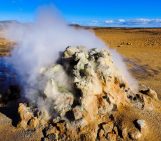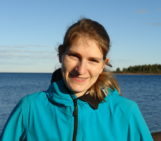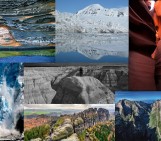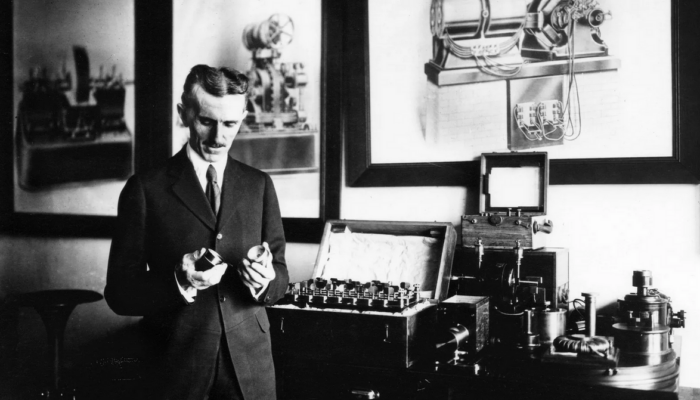
Most people associate Tesla with the multi-billion American automotive and clean energy company, and by that extension, with Elon Musk. But with today (July 10th) being Nikola Tesla Day, it gives us a rare opportunity to discover the man behind the name – the Serbian American scientist who contributed to scientific progress and advances in technology that we still heavily rely on today.
Tesla is credited with the discovery of the rotating magnetic field, the invention of the Tesla coil and alternating-current (AC) electricity. He is also said to have worked on the foundations of wireless communication and energy transfer, as early as the 1900s. But perhaps Tesla’s most intriguing and controversial undertaking was what many called the “earthquake machine”. Now if you think that sounds a tad sensationalist, Tesla himself claimed that it nearly shook a city block off the ground!
It began in 1896 with Tesla studying resonance and oscillations to transfer energy. His idea was to create a steam-powered oscillator which would be able to create various frequencies. Tesla hypothesized that if the frequency matched the resonance frequency (think of a violin’s note shattering a wine glass) a receiving device should transform the mechanical oscillations back into an electric current. The story goes that Tesla tested this hypothesis by attaching his oscillator to a steel girder in his laboratory, which shook the neighbourhood in earthquake-like tremors. With the police on their way, Tesla allegedly resorted to smashing his device with a hammer.
The real question of course is whether this story is more legend than fact. Sergio Vinciguerra, President of EGU’s Earth Magnetism & Rock Physics Division says, “The idea of transforming mechanical energy from seismic waves into electrical energy can stand theoretically, but in practice inducing the shaking of a structure to trigger this phenomenon is not realistically feasible. Waiting for a natural earthquake is not realistic as well. The legend of the earthquake that Tesla induced in New York has not been confirmed. I find it more interesting that he understood the potential of the oscillator in terms of probe for exploring the inner structure of Earth. This is where the research has developed.”
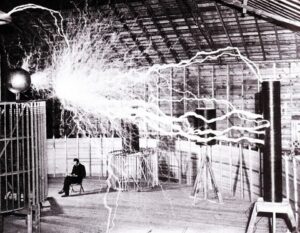
This tesla coil snuffed out the power in Colorado Springs when this photo was taken. Photo by Dickenson V. Alley, photographer at the Century Magazines via Wikimedia Commons.
A little over a decade ago while I was still in university, I remember reading (and then re-reading) a 1912 newspaper clipping of Allan L. Benson’s article called “Nikola Tesla, Dreamer: His three-day ship to Europe and his scheme to split the Earth”. Tesla confided in the reporter that if he wanted to, he could have laid a half-erected building in shambles in the Wall Street district. And using the same principle, he could have dropped the Brooklyn Bridge into the East River in less than an hour.
Depending on whom you ask, Nikola Tesla is regarded as one of the most genius inventors and eccentric researchers of all time. But there is no contesting his vision for a future that few could comprehend, much less dare to prove in their lifetime. Tesla is often quoted as saying, “If you want to find the secrets of the universe, think in terms of energy, frequency and vibration.” But some of his bolder quotes are seldom referenced, such as when he declared:
“If I cannot send a message to a ship at sea, send it without wires, and make the message understood to those aboard the ship, I am willing to lay my head on the block.”
And guess what? Three years later, Tesla obtained American patents for a system of wireless telegraphy.
Although he discovered how to transmit radio signals by tuning them to resonate at the same frequency, Tesla was reportedly devastated when the U.S. Patent Office gave Guglielmo Marconi – an Italian researcher in England – a patent for the invention of radio. Marconi went on to win the Nobel Prize in 1911, crushing Tesla’s spirits and leading him to sue the Marconi Company for infringement, despite his lack of funds to follow through on the case. It was only a few months after his death that the U.S. Supreme Court upheld Tesla’s radio patent number 645,576, but sadly the scientist did not live to hear the news.
Because of the many rumors and mysteries surrounding Tesla’s experiments, and because so many of his discoveries were ahead of their time, he was often mocked and ridiculed for his research. One night in his laboratory, Tesla noticed that his transmitter was picking up a repeating signal, which led him to believe that he was receiving a signal from outer space. Some conspiracy theorists say Tesla “communicated with aliens”, but it is far more likely that he was the first man to detect radio waves from space.
The world in which we operate today and the means by which you’re reading this blog were once incomprehensible to people of Tesla’s time. He envisioned a world system much like ours now: one that is able to relay phone messages across the ocean, broadcast news, music and private messages, transmit secure military communications, and send pictures to people in any part of the world. “When wireless is fully applied the earth will be converted into a huge brain, capable of response in every one of its parts,” Tesla explained. Even when large-scale funders like J. P. Morgan gave up on him, Tesla insisted that his visions were in fact not a dream. “It is a simple feat of scientific electrical engineering, only expensive… (this is a) blind, faint-hearted, doubting world.”


